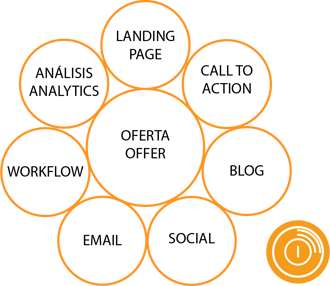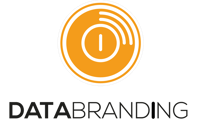
When companies come to us so we review their digital strategy, we realize that they don't have a clear plan on how to implement it. Discover how to do it and put it to work.
Digital Marketing Strategy
In our blog, we have talked a lot about several paths to follow in a digital strategy. However, in this article, I want to focus on the master document that needs to be followed in order to put any strategy into work, and not keep it like just another good idea we've had.
Stages of a Strategy
1 Evaluation of the company
Gather your team and agency so that you can study the current situation of the company. In order to do so, there are many tools that you can use, such as SWOT: Strenghts, Weaknesses, Opportunities and Threats.
On this stage, we want to set the goals and challenges to overcome in order to understand which actions we need to take to change the situation so we are are set on the right path to achieve our goals.
It's at this moment when we assess our company from the inside so we better understand which processes need to be improved. We also study the company and its surroundings so we learn about our competitors, about what they're doing well and about those things that we can improve so we stand out and differentiate ourselves from them.
2 Buyer Persona
A buyer persona is a fictitious representation based on the characteristics of our ideal client. Developing these profiles is the most important thing to do, since we'll know who are we selling to and what we are going to sell to him.
The objective of doing this, is to be able to understand the needs and problems that we solve with our products or services. Using this, we can find the right person by sending the right message. This is how we'll communicate the value that we generate for our customers.
3 Build a Content Engine
Content is the digital currency on the internet and social networks. If there's no content, there's nothing to show or communicate. Content is created to answer questions, learn, and investigate. Is the main reason why we use the internet.
Therefore, choosing the content strategy depending on the buyer persona, is the most important phase of a strategy so we can put everything to work. If we don't have a clear idea of what we're communicating, who are we doing it for, and what we are helping him to solve, then our strategy won't be neither clear nor complete.
The buyer’s journey is analyzed, which is the way in which a person moves forward towards their buying decision. The research this person does in order to make a decision and the questions he usually asks at each stage, become the communication contents that will be produced and broadcasted on our digital media. These contents are: videos, blogs, audios, infographics and email nutrition campaigns.
Buyer's Journey Stages
- Awareness- The person realizes he has a problem and thus, begins his research on the internet to understand the degree of importance of the problem and how to solve it.
- Consideration- On this stage, the person learns about the different solutions that he has to solve his problem and studies the results of each of them.
- Decision- He evaluates which company or solution is the one that will better solve his problem and chooses it.
4 Campaign Generation
For each buyer stage, we must create a content offer which will include a series of components. When we put all of these components to work together, that's when we can say we've built a real comprehensive campaign. For example:

- Offer. It's the educational material that we'll offer our prospect so he can learn more about the solution and the problem he has to solve.
- Landing page.- Page at which, by filling in a form, this person will exchange his contact information for our offer.
- Call to action.- Is that "click-on" button that shows our main content offer at different parts of our website. It takes the person to a landing page.
- Blog.- It's the article or series of articles that give an answer to the main questions regarding the problem.
- Social.- Blogs and offers are posted on social media channels.
- Email.- The database is segmented so we can carry out a content nutrition sequence by email. This sequence seeks to address the issue in greater depth and promote other campaigns of the consideration and decision stages.
- Workflow.- It's an automated workflow that, making use of artificial intelligence, triggers actions, such as the email campaign.
- Analysis.- Finally, we analyze each of the components of the campaign so we optimize and improve the performance of each element of the campaign.
With these materials designed, we make one campaign for the awareness stage, one for the consideration stage and another one for the decision stage. This allows us to have a specific plan on what needs to be done in order to attract a visitor, until he becomes a prospect.
The next step we need to take is to create a sales process that our sales representatives can follow. This process will allow you to close deals with prospects who were created on digital media.
Click on the following button and download a presentation on how to create a Game Plan.

